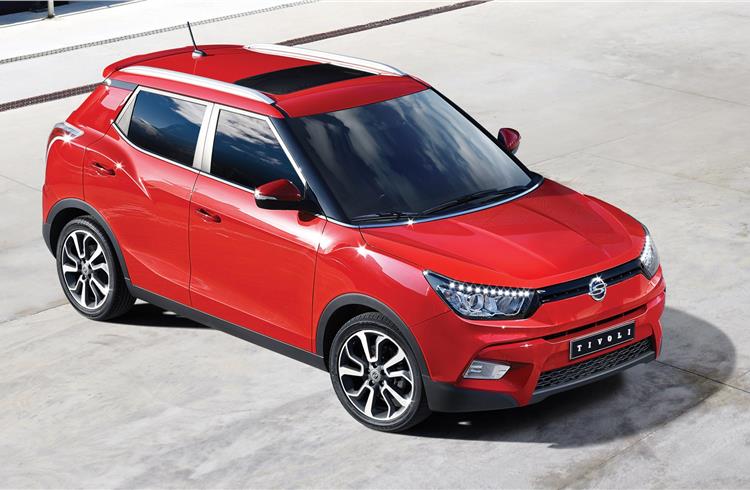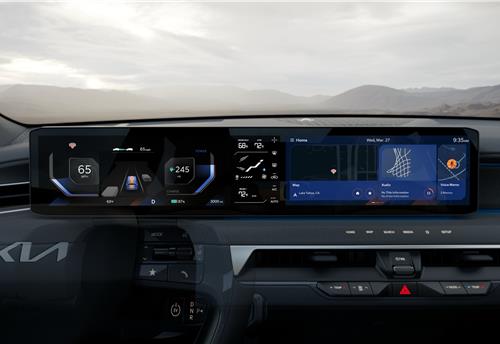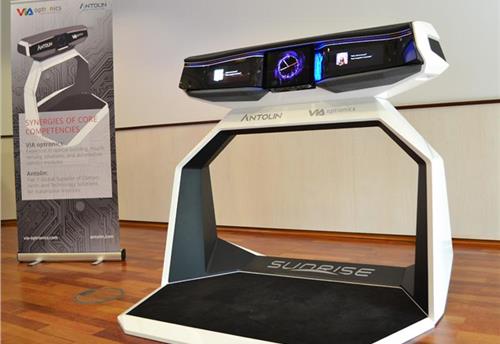How Mahindra plans to rescue SsangYong
Four weeks is a heck of a long time to spend on top of a 230 foot-high smokestack.
Four weeks is a heck of a long time to spend on top of a 230 foot-high smokestack. But when it gets you a personal audience with the owner of the company you’re having a dispute with, who’s to say it’s not worthwhile?
That’s precisely what happened recently at the Mahindra Group-owned SsangYong , where two of the disgruntled employees laid off during the firm’s bankruptcy in 2009 held a protest at – or above – its Pyeongtaek factory. Anand Mahindra, chairman of the Mahindra Group, was in the country, paid a visit to the plant and extended an offer of dialogue via his Twitter account.
The two parties eventually talked on the telephone to keep their conversation out of public view (and the employees were showing no signs of coming back down as this article went to press), but it still amounted to a remarkable bit of theatre between an Indian billionaire and a couple of South Korean union reps trying to prick his conscience.
That sort of thing can happen at the self-titled ‘Most Innovative and Respected Korean Automotive Company’ – because it’s small enough for things to get personal.
Even SsangYong’s mass manufacturing processes seem more intimate. The Pyeongtaek facility, sited about 60km from Seoul, seems to operate at a more relaxed pace than most other automated facilities. The employees there – those who got their jobs back and didn’t have to protest – made 140,000 cars last year, but the capacity is more than 100,000 vehicles above that figure, and it shows. You can see that this is a company with room to grow.
Mahindra (the company) certainly thinks so. It has already invested 700 billion won (Rs 4,232 crore) into SsangYong since it acquired the broken pieces in 2009 and announced a fresh, further injection of one trillion won (Rs 6,014 crore) this month. SsangYong will launch a new car every year for the foreseeable future, starting with the Tivoli baby SUV that’s due in British dealers this summer.
That product plan looks modest in the face of the Volkswagen empire onslaught, but, in truth, it’s ambitious for a firm that has often kept models alive years beyond their natural product cycle.
“I can’t share too much detail on the forthcoming products, but I can tell you we’re going to focus on SUVs,” says Anand Mahindra. That makes sense, for three main reasons. First, the world still can’t seem to get enough of off-road-influenced vehicles. Second, if SsangYong is known for anything as a brand, it’s SUVs. Third, this type of vehicle offers the easiest, most straightforward tie-ins with Mahindra’s own model line-up in India.
That’s a crucial part of the plan: the sharing of platforms, engines and other technologies. The first signs are evident in the Tivoli, which benefits from the same Aisin six-speed automatic gearbox as that fitted to the latest Mini – sourced (and no doubt costed) via a joint SsangYong/Mahindra deal.
Next up will be engines. Mahindra admits that there are six under development between the two companies. They’re normally aspirated and turbocharged, three and four-cylinder petrol and diesel units, suitable for everything from an upcoming Indian-market baby SUV to the next generation of the Nissan Qashqai-rivalling Korando.
In the UK, SsangYong is sold by a privately owned company and a modest but committed dealer network of about 60 showrooms. Under the guidance of former Kia UK boss Paul Williams, the brand sold just under 1,800 units last year, including 300-odd commercial vehicles.
The goal in 2015 is to double that figure, with improved sales across the range and, crucially, the Tivoli. The new small SUV will have one of the most comprehensive mechanical line-ups in the class, with petrol and diesel, manual and automatic, and two and four-wheel drive. SsangYong has everything from the Nisan Juke and Vauxhall Mokka to the Fiat 500X in its sights – and with a likely starting price of less than £13,000/Rs 12.8 lakh, it’ll undercut the lot of them.
It will need selling, mind, and many of the dealers will have to learn to cope with style-focused, urban-centric customers instead of the ultra-pragmatic bargain hunters and caravanners who have driven sales up to now. Even with the Tivoli – not a class leader, but no worse a proposition than many in the small SUV crowd – growth is by no means a given.
The same can be said for the parent company, which badly needs to expand production if it is to avoid the same low-volume pitfalls that dragged it under five years ago. Small wonder that Anand Mahindra isn’t getting carried away.
When confronted with the still-painful legal wrangle with the employees (many of whom had a stand-off with riot police at the Tivoli’s launch in Seoul city centre), he promises that those who were laid off will be the first to be offered jobs in any further expansion. But he adds: “I’d ask the Korean people to remember that in 2009, there were very few who gave SsangYong any chance of survival at all. Many jobs were at stake. Today, thanks to the efforts of CEO Mr Lee and his team, more than 4,800 people have a chance of survival and keeping their jobs.
“I used that word ‘a chance’, and that’s all it is. The turnaround of SsangYong is by no means complete and there are still many challenges ahead. But this is a chance that we must not, cannot lose.”
Q&A WITH ANAND MAHINDRA, CHAIRMAN, MAHINDRA GROUP
The Tivoli opens up SsangYong to new customers globally. What are your sales expectations for the car?
“Our sales goal is 35,000 units in 2015, but from next year I think we can achieve 100,000 units with this car. We’ll launch a diesel version shortly after the petrol, and then a long-body edition will follow before the end of this year.”
SsangYong is still losing money and operating at a relatively small production volume. When do you think it can return to profit?
“It would have made a profit in 2014, were it not for a new wage system that we implemented last year. But with the increase of production to full capacity, Tivoli and new models later, I think we can make a financial turnaround in the next couple of years.”
Can SsangYong keep developing its own stand-alone products, like the Tivoli, or would you like it to share technology?
“To develop a new model costs around 300 billion Korean won (Rs 1,801 crore), but I believe we can manage that investment cost on our own. But we’ll continue to source parts together for Mahindra and SsangYong models. We’ll extend opportunities in this area to reduce material costs.”
What about the US? Can SsangYong afford not to be there?
“We have put on record that we are targeting the American market. I believe that for the Mahindra Group as a whole, SsangYong makes good sense as a flag bearer for the group in the US, not least because Korea as a country has established its reputation there for making good, reliable automobiles. It’s common sense for us to support SsangYong’s push into the US.”
RELATED ARTICLES
Marelli Talbros Chassis Systems wins Rs 1,000 crore business from European OEM
The order, to be executed over an eight-year period, is for the supply suspension arms tailored for both conventional in...
Kia launches customised NBA display themes for North American market
Display Themes is a customised service that supports a personalised vehicle experience, allowing users to customise the ...
Antolin and VIA Optronics unveil versatile vehicle cockpit concept
The Sunrise vehicle concept cockpit, which is engineered for seamless transitions between manual and autonomous driving ...





 02 Feb 2015
02 Feb 2015
 4555 Views
4555 Views





 Autocar Pro News Desk
Autocar Pro News Desk




